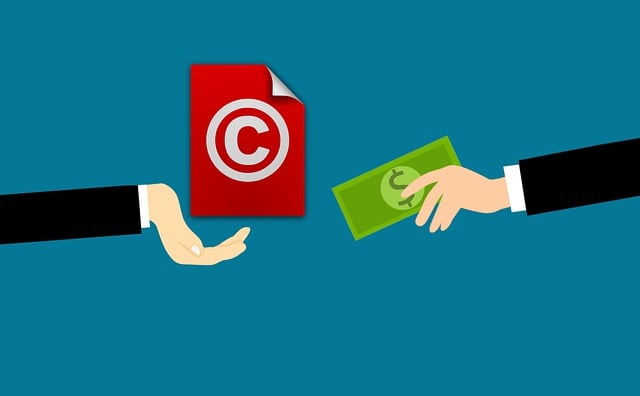Updating your address with the DMV is essential after moving. Missed mail due to an outdated address can cause delays and fees for license and registration renewals. States are enhancing record-keeping, so changing your address online promptly ensures current records and reduces communication issues. Most DMVs offer secure digital portals for quick and efficient address changes, avoiding penalties related to missed notices.
Moving to a new home? Don’t let outdated DMV records slow you down! Timely address updates are crucial for seamless registration renewals and avoiding missed communication from your state. This article guides you through the digital transformation of DMV address changes, making the process quick and secure. Learn how to stay proactive, avoid fees, and keep your registration information current in an era where states are cracking down on outdated records. By following these steps, you’ll ensure a hassle-free transition and maintain timely access to important correspondence related to your vehicle’s registration.
- Why Address Change at DMV is Crucial
- Steps to Update Your DMV Address Online
- Benefits of Digital Address Updates
- States Cracking Down on Outdated Records
- Avoiding Missed Correspondence and Fees
- Common Mistakes to Avoid During Address Change
- Staying Proactive for Timely Registration Renewals
Why Address Change at DMV is Crucial

Moving to a new location is an exciting step, but it’s not without its administrative hurdles. One often overlooked task is updating your address with the Department of Motor Vehicles (DMV). This simple yet vital action ensures that all your registration and renewal notices reach you at your current residence on time.
Missed mail due to outdated addresses can lead to fees, penalties, and even delays in crucial document updates. As DMVs across states implement stricter record-keeping policies, staying proactive about changing your address is more necessary than ever. By promptly updating your information through the DMV’s online portals, you avoid these pitfalls and maintain a clean, up-to-date driver’s license and registration record.
Steps to Update Your DMV Address Online

To update your DMV address online, follow these straightforward steps. First, visit the official DMV website for your state. Look for an ‘Address Change’ or ‘Update Information’ section on the homepage. You’ll typically need to log in with your driver’s license number and birthdate. After logging in, find the option to modify your personal details. Here, you can update your mailing address by entering your new information accurately. Once submitted, ensure you receive a confirmation message or email verifying the address change. This process is secure and allows for quick updates, keeping your registration records current and reducing the risk of missed communications from the DMV.
Benefits of Digital Address Updates

Updating your address digitally through DMV portals offers numerous benefits. For one, it streamlines the process, allowing you to make changes quickly and securely from the comfort of your home. This is particularly convenient for those with busy schedules or limited mobility.
Moreover, digital updates ensure accurate and timely record-keeping by the DMV, reducing the risk of missed communications. You’ll no longer have to worry about important renewal notices or reminders getting lost in the mail or stacked among other paperwork. Digital systems also enhance security, protecting your personal information from potential errors or fraud that could occur with paper documents.
States Cracking Down on Outdated Records

States across the nation are increasing their efforts to maintain accurate driver’s license and vehicle registration records. Outdated or incorrect addresses on file can lead to critical communication issues, such as missed renewal notices, important safety reminders, and potential fines. DMVs are now leveraging technology to streamline address changes, offering secure online portals that make the process faster and more efficient for both residents and state agencies. By staying proactive with these updates, drivers can avoid unnecessary penalties and ensure they receive all essential correspondence related to their registration in a timely manner.
Avoiding Missed Correspondence and Fees

One common pitfall new residents often encounter is failing to update their address with the DMV. This can lead to missed correspondence from your state regarding registration renewals, license expiration, or other important notices. As states increasingly tighten record-keeping to prevent fraud and identity theft, keeping your information current is more crucial than ever. Failing to do so could result in penalties or even the suspension of your registration, creating unnecessary stress and costs for you down the line.
By utilizing the convenient online address change portals offered by most DMVs, residents can quickly and securely update their records. This proactive step ensures that all communications reach the correct location, avoiding the hassle—and potential fees—associated with missed mailings or outdated information.
Common Mistakes to Avoid During Address Change

Staying Proactive for Timely Registration Renewals

Staying proactive about updating your DMV address change is crucial for maintaining timely registration renewals and ensuring you receive all important notices. With states increasingly cracking down on outdated records, it’s essential to stay current with your information. By integrating online portals, the process has become both quick and secure. Avoiding missed correspondence or fees starts with understanding and following this streamlined process to keep your registration information up-to-date.
Updating your DMV address is a straightforward process that offers significant benefits. By staying proactive and utilizing online portals, you can avoid missed correspondence, fees, and potential legal issues. With states increasingly vigilant about accurate records, ensuring timely registration renewals is easier than ever. Remember to regularly verify your information to maintain an up-to-date driver’s license and vehicle registration.



